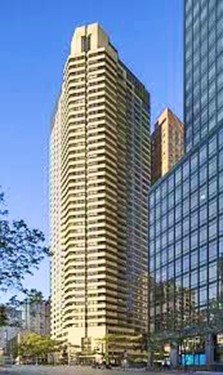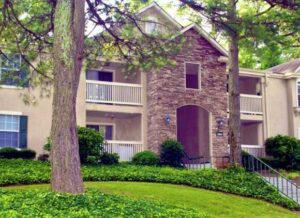Residential

Southwestern U.S.
Rental housing remains a favored asset class. The multi-family housing sector has led sales growth in the U.S. for almost a decade. It has benefited from robust migration patterns (with over half a million new residents in both Florida and Texas), increasing rents and stalled household formation. In the decade prior to the pandemic, the multi-family rental housing inventory throughout North America grew dramatically and new builders, developers, managers and investors all entered the sector. While multi-family housing outperformed many other property types, the pandemic proved to be difficult for many property owners as significant rental income as well as ancillary revenue was lost from waived fees, deferred rents and delinquencies. However, the sector has rapidly recovered. The pandemic-induced downturn disproportionally impacted urban markets. Contributing to these markets’ diminished appeal were remote working requirements, the closing of many urban amenities, a reluctance to use public transit, a desire for more living space and a preference for greater access to the outdoors. Additionally, non-pandemic-related factors exacerbated the situation including the high cost of urban apartments and shifting demographics. Many younger renters are reaching a stage in life where the appeal of urban living is outweighed by housing options offering additional space and outdoor amenities in less dense areas. While the decline in urban multi-family demand will not last indefinitely, urban markets have lagged the multi-family sector’s overall recovery. Less dense and expensive suburban markets performed remarkably well during the pandemic and are well positioned to lead overall market performance for the foreseeable future.

New York, New York
With improving market conditions, multi-family investment volume is again increasing. During the pandemic, investor demand for multi-family assets was greater than in previous recessions and pricing levels held close to normalized levels. However, many investors deferred additional commitment until the longer term impact of the pandemic on markets could be assessed. With greater clarity on likely future supply and demand characteristics as well as revenues, it’s anticipated that institutional and private investors will become more active during the coming year and cross-border investment will increase. With respect to U.S. markets, suburban assets in the Midwest and Southeast have provided the best opportunities in the near term. However, some multi-family segments that experienced greater dislocation during the pandemic, such as upper tier assets in gateway urban markets, may not stabilize for some time.

Atlanta, Georgia
The rental market for single family homes is also growing rapidly. The single family rental market began to expand after the financial crisis as institutional investors bought thousands of units throughout the U.S. out of foreclosure in REO portfolios as well as bulk unsold inventory from home builders. Over the past five years, additional institutional capital was committed to acquiring existing single family homes in targeted locations, placing them in the rental market and managing them on a pooled basis. Many of these ventures have now been spun off as public companies and the sector continues to grow at an extraordinary pace. Additionally, the “build-to-rent” niche of the single family home construction industry is expanding rapidly and is one of the more notable emerging trends in the overall residential property market. Increasing numbers of residential tenants are choosing to rent single family homes with additional space, upgraded finishes and more amenities than renters can usually access in most typical multi-family apartment projects. Additionally, affordable housing and workforce housing are additional current areas of focus for investors. However, there can be significant structural, regulatory and operational issues to address in both of these sectors.

Miami, Florida
An attractive opportunity in the current market continues to be the bulk purchase of unsold condominium units. In some markets, especially in the Northeast, repricing has occurred because of uncertainty surrounding the strength and timing of the markets’ full recovery from the pandemic. In other markets, particularly in the Sunbelt, repricing has occurred as a result of a supply and demand imbalance in condominium inventories at specific points in the development cycle. These opportunities can be driven by overbuilding of new product by developers leading to an oversupply; broader economic and demographic trends such as out migration; a shift in the composition of targeted buyers; changes in the local tax regime; and changes in the regulatory environment. Areas with strong longer term demand but shorter term supply disparities are of particular interest.

Stamford, Connecticut
Prescott sees multi-family rental apartment projects, as well as units in condominium projects, as desirable investments if they can be acquired at attractive pricing levels relative to underlying value at favorable points in the development cycle. Prescott considers acquiring assets in the residential sector if regional and local economic and job growth statistics are favorable, fundamental occupancy and absorption characteristics of a market are sound and improving and the specific location and design of a project are well suited to its competitive position and market demographics. Prescott is particularly attentive to circumstances where property economics can be significantly improved by changes in management or the implementation of specific property improvement programs. Prescott also targets specific market anomalies and special situations in the highly fragmented residential sector.
